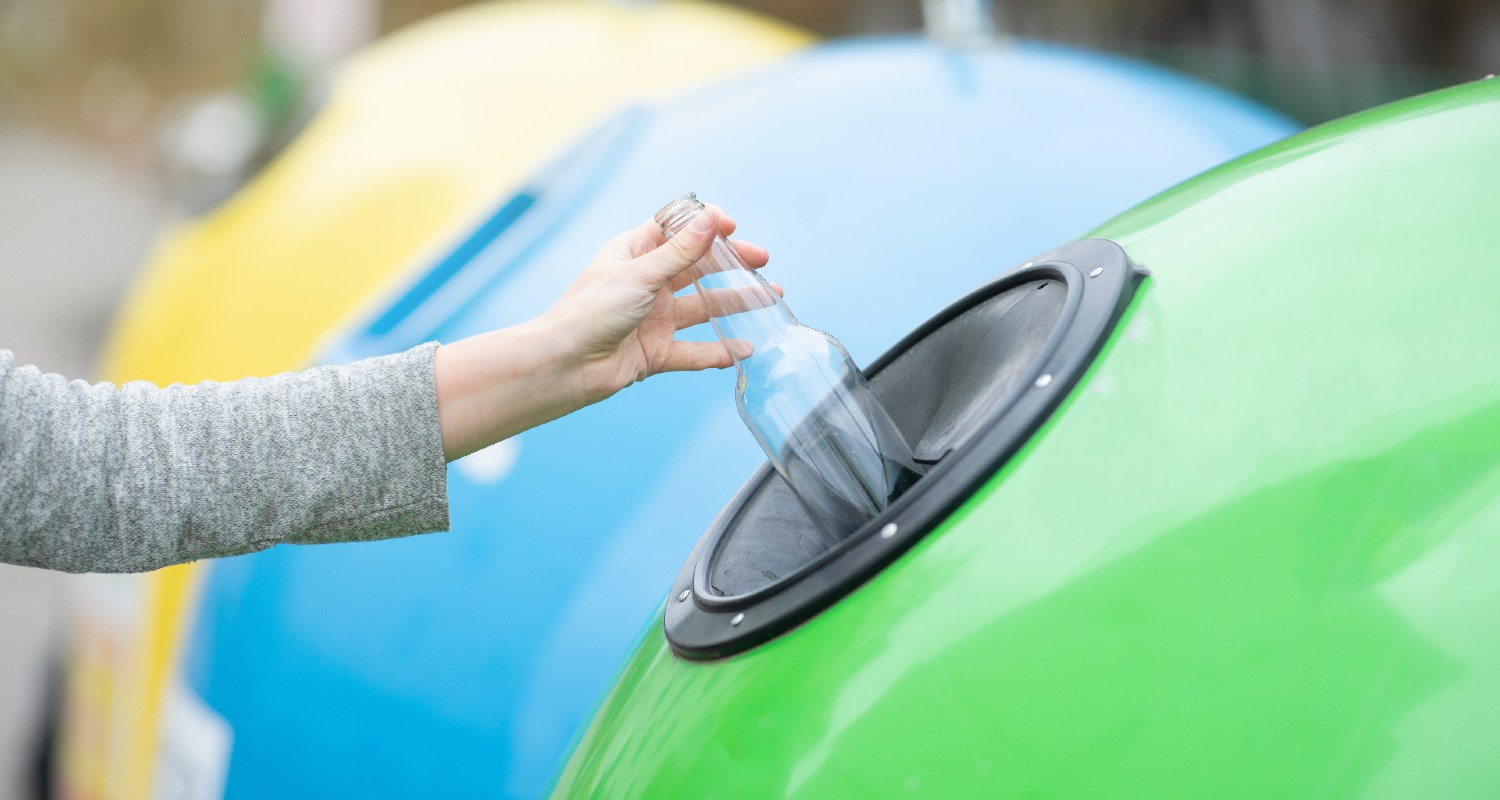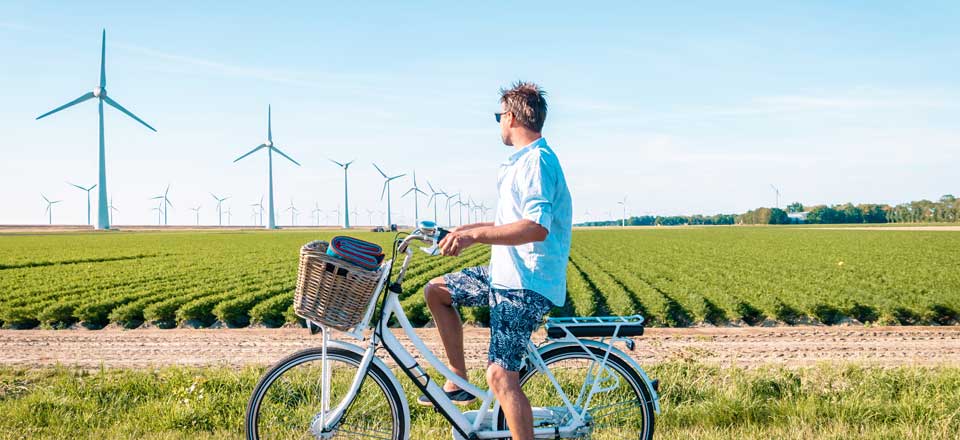
How to care for the environment
How to care for the environment
Every little action adds up
Read time: 10 min
According to the results of the 2022 Eurobarometer, the environment is the fourth main concern at the country level and in the European Union. If you have ever wondered how to help to care for the environment, we recommend you follow these practical tips in your daily life, which will also help you improve your household finances. Every action counts.
Tips for caring for the environment
Tips for caring for the environment
Many of us think that we lead a responsible and eco-friendly way of life. However, this may not be entirely true. Many of our habits, even if we're not aware of them, may actually be polluting. Therefore, here we mention some habits that will help you take care of the environment. We hope you find them helpful and include them in your daily life to achieve a responsible consumption, because as we said before, every action counts.

Saving water
Saving water
If you wonder how to care for the environment in your daily life, one of the simplest ways is to start by saving water. Water is a natural resource that is essential for the reproduction of life on the planet, so that its use needs to be deliberate and moderate. Turning off the faucet while doing things like soaping your hands, brushing your teeth, or shaving can save each home hundreds of liters of water and reduce its ecological footprint.
For example, if you leave the faucet running while performing one of these tasks, you waste approximately six liters of water, but if you only turn on the water when necessary, the amount wasted is less than half a liter. Other measures that you can take to save water are to take a shower instead of a bath, use the dishwasher and washing machine with a full load, and turn off faucets completely so that they do not drip.

Unplug the devices you are not using and use low-consumption light bulbs
Unplug the devices you are not using and use low-consumption light bulbs
Have you ever heard of ghost consumption? This is the power consumed by electronic devices when they are plugged in, even if they are not being used. To save energy, it's recommended to unplug devices when they are not being used or to use power strips with a switch so that they can be switched off when not needed. Another good idea is to install a timer on devices that are not needed during the night, such as the television, printer, or game console.
For your home’s power consumption, one smart option is to look at the energy efficiency certificate on electrical appliances, as an efficient appliance saves energy and contributes to caring for the environment. Also, low-consumption light bulbs use less power and last more hours, so that they have a longer useful life. Bulbs of this type can consume around 50% to 80% less power than traditional ones. It is also advisable to take advantage of the hours of daylight to reduce the use of lighting during the day.

Moderate your use of heating and air conditioning
Moderate your use of heating and air conditioning
Other actions that take care of the environment are making good use of heating and air conditioning. This way, you will reduce your carbon footprint. To save power, it's recommended to take advantage of natural heat and to heat up the space correctly only when necessary. To use it efficiently, it's recommended to set a temperature between 19ºC and 21ºC in winter and between 23ºC and 25ºC in summer. Therefore, you must bear in mind that raising the temperature by 1ºC can increase power consumption by up to 7% and also your electricity bill.
According to the Institute for Energy Diversification and Saving (IDAE), humidity is a key factor in thermal sensation, so indoors it should be set at 40% to 50%. And, if you feel cold, put on suitable clothing. If you need to change your air conditioning, one good option is to purchase one that is self-regulating and turns off automatically when the desired temperature is reached, preventing the extra use of power. For greater efficiency, it is also important to check for possible air leaking out of the room, so that the cold and heat do not escape through small cracks and the temperature is maintained.

Buy products by weight or in bulk
Buy products by weight or in bulk
Caring for the environment at home is very easy if you adopt some simple habits such as purchasing products by weight or in bulk to reduce the use of packaging.
Some food such as grains, beans, fruits, and vegetables can be sold like this, which means that consumers only take the amount they need. Other types of food need to be sold in packages or containers to preserve all their properties and ensure food safety.

Recycle and sort all the garbage you can
Recycle and sort all the garbage you can
Other actions to care for the environment are recycling and properly sorting household items. In accordance with the Ecoembes recycling recommendations, each home must sort its waste into different bins:
- The yellow bin is for bottles and plastic containers, metal containers, and cartons.
- The blue bin is for cardboard packaging and paper.
- The green bin is for glass bottles and food jars.
- The brown bin is suitable for food waste, corks, matches and sawdust, and small garden waste. They do not exist in all of Spain’s autonomous regions.
- The gray or orange bin is suitable for all waste that cannot be used to make compost.
- There are special bins for clothing and footwear, and collection points for large and small batteries, individual coffee capsules, medicines, wood, used domestic vegetable oil, or large waste such as furniture or mattresses, among others.
To see the list of allowable waste and quantities and locate the closest recycling center, make sure to check out to the online channels of your local authority.

Use more sustainable means of transportation
Use more sustainable means of transportation
The use of public transportation is an excellent option for caring for the environment. It can transport a large number of people, reducing the number of vehicles on the road and therefore reducing emissions of CO2 and other greenhouse gases
Other sustainable mobility alternatives for getting around the city are scooters, electric bicycles, or cars rented by the minute. Fortunately, there are many options and collaborative economy initiatives that allow you to travel more sustainably, and at the same time, care for the environment.

Consume local products
Consume local products
One of the new consumption trends that can contribute to caring for the environment is opting for food that's in season. These products follow the growth cycle and are picked when optimally ripe, so that they are fresh, tasty, and nutritious. Also, since they were grown nearby, they do not have to be transported for miles, which reduces emissions.
Other benefits of consuming local products is that it keeps fresh food from spoiling, as it travels short distances and the amount of packaging is considerably reduced since it doesn't need much protection. Consuming local products definitely has very positive effects on each area's economy, because it creates jobs and wealth, and on the environment, because it reduces power consumption.

Applying circular economy principles
Applying circular economy principles
The circular economy model is based on optimizing resources, reducing the consumption of raw materials, and making use of waste by recycling it or giving it a new life by transforming it into new products. This way, you will be contributing to extending the so-called product life-cycle.
The benefits of the circular economy are wide-ranging. It protects the environment by reducing emissions and minimizing the consumption of natural resources. It benefits the local economy by promoting production models based on reverse logistics and reusing waste. It promotes employment and stimulates the development of a new, more innovative, and competitive industrial model. Moreover, it increases independence from imported raw materials. In fact, this new model results in sustainable cities by taking into account environmental, economic, and social aspects.
